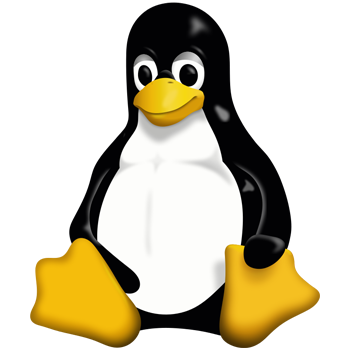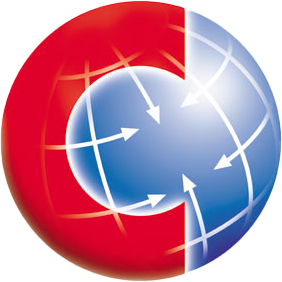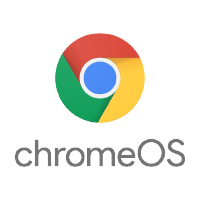Unix, Linux, and variant history

Listed below are the important historical events relating to Unix, Linux, and its variants, including release dates.
1957
Bell Labs needed an operating system for its computer center that was running various batch jobs at the time. The BESYS operating system was created at Bell Labs to deal with these needs.
1965
Bell Labs was adopting third-generation computer equipment and decided to join forces with General Electric and MIT (Massachusetts Institute of Technology) to create Multics (Multiplexed Information and Computing Service).
1969
By April 1969, AT&T decided to withdraw Multics and go with GECOS. When Multics was withdrawn, Ken Thompson and Dennis Ritchie needed to rewrite an operating system to play space travel on another smaller machine (a DEC (Digital Equipment Corporation) PDP-7 [Programmed Data Processor 4 K memory for user programs). The result was a system that a punning colleague called UNICS (Uniplexed Information and Computing Service)—an "emasculated Multics."
Summer 1969 Unix was developed.

Linus Torvalds was born on December 28, 1969.
1971
The first edition of Unix was released on November 3, 1971. The first edition of the Unix PROGRAMMER'S MANUAL [by] K. Thompson [and] D. M. Ritchie. It includes over 60 commands like: b (compile B program); boot (reboot system); cat (concatenate files); chdir (change working directory); chmod (change access mode); chown (change owner); cp (copy file); ls (list directory contents); mv (move or rename file); roff (run off text); wc (get word count); who (who is one the system). The main thing missing was pipes.
1972
The second edition of Unix was released on December 06, 1972.
Ritchie rewrote B and called the new language the C language.
1973
Unix had been installed on 16 sites (all within AT&T/Western Electric); it was publicly unveiled at a conference in October.
The third edition of Unix was released in February 1973.
The fourth edition of Unix was released in November 1973.
1974
The fifth edition of Unix was released in June 1974.
Ken Thompson went to UC Berkeley to teach for a year, and Bill Joy arrived as a new graduate student. Frustrated with ed, Joy developed a more featured editor em.
1975
The sixth edition of Unix was released in May 1975.
Bourne shell was introduced in 1975.
1977
1BSD (Berkeley Software Distribution) was released in late 1977.
1978
2BSD was released in mid-1978.
1979
The seventh edition of Unix was released in January 1979.
3BSD was released in late 1979.
SCO was founded by Doug and Larry Michels as a Unix porting and consulting company in 1979.
1980
4.0BSD was released in October 1980.
1982
HP-UX (Hewlett-Packard Unix) 1.0 was released.
1983
AT&T released its first version of System V.
SCO delivered its first packaged Unix system called SCO Xenix System V for Intel 8086 and 8088 processor-based PCs.
The GNU (GNU's Not Unix) project was first announced by Richard Stallman on September 27, 1983.
1984
ULTRIX was released.
1985
The eighth edition of Unix was released in February 1985.
The GNU manifesto was published in the March 1985 issue of Dr. Dobb's Journal. The GNU project started a year and a half later.
1986
The ninth edition of Unix was released in September 1986.
1987
Sun and AT&T laid the groundwork for business computing in the next decade with an alliance to develop Unix System V Release 4.
MINIX, a free Unix clone was written by Andrew Tanenbaum and made available to the public in 1987.
1988
HP-UX 2.0 released.
HP-UX 3.0 released.
1989
SCO shipped SCO Unix System V/386, the first volume commercial product licensed by AT&T to use the Unix System trademark.
HP-UX 7.0 released.
The tenth edition of Unix was released in October 1989.
1990
AIX, short for Advanced Interactive eXecutive, was first entered into the market by IBM in February 1990.
1991
Sun unveiled the Solaris 2 operating environment, specially tuned for symmetric multiprocessing.
Linus Torvalds, a student in Finland, introduced Linux (FREAX).
HP-UX 8.0 was released in 1991.
BSD/386 ALPHA First code released to people outside BSDI 12/xx/1991.
1992
HP-UX 9.0 was released in 1992.
1993
NetBSD 0.8 was released on April 20, 1993.
FreeBSD 1.0 was released in December 1993.
1994
Red Hat Linux was introduced in 1994.

Caldera, Inc. was founded in 1994 by Ransom Love and Bryan Sparks.
The first version of SUSE Linux was released in March 1994.
NetBSD 1.0 was released on October 26, 1994.
1995
FreeBSD 2.0 was released in January 1995.
SCO acquired Unix Systems source technology business from Novell Corporation (which had acquired it from AT&T's Unix System Laboratories). SCO also acquired UnixWare 2 operating system from Novell.
HP-UX 10.0 was released.
4.4 BSD Lite Release 2, the true final distribution, was released by the CSRG in June 1995.
1996
KDE (K Desktop Environment) started to be developed by Matthias Ettrich.
1997
HP-UX 11.0 was released.
Caldera shipped OpenLinux Standard 1.1 on May 5, 1997, the second offering in Caldera's OpenLinux product line.
1998
IRIX 6.5, the fifth generation of SGI Unix, was released on July 6, 1998.
SCO delivered the UnixWare 7 operating system.
Sun Solaris 7 operating system was released.
FreeBSD 3.0 was released on October 16, 1998.
2000
FreeBSD 4.0 was released on March 13, 2000.
Caldera Systems Inc. announced that Caldera Systems had agreed to acquire the SCO Server Software Division and the Professional Services Division.
Red Hat released the first version of Red Hat Enterprise Linux on February 22, 2000, and was originally named Red Hat Linux Advanced Server.
2001
Linus Torvalds released version 2.4 of the Linux kernel source code on January 4, 2001.
Microsoft filed a trademark suit against Lindows.com in December 2001.
2002
Gentoo 1.0, a Linux distribution, was released on March 31, 2002.
2003
The first version of Fedora, a Linux distribution, was released on November 6, 2003.
2004

Lindows changed its name to Linspire on April 14, 2004.
Red Hat Linux 9.0, the last version of Red Hat Linux (commercial), reached end-of-life on April 30, 2004.
The first version of Ubuntu was released on October 20, 2004.
2007
Google released the first version of the Android operating system for mobile devices on November 5, 2007. The Android OS (operating system) is based on the Linux kernel.
2009

ChromeOS, a Linux-based operating system, was developed by Google on July 7, 2009. ChromeOS is designed to be used with a Chromebook.
2013
Valve released SteamOS, a gaming operating system based on the Linux distribution Debian, on December 13, 2013.
2016
A free subscription option for Red Hat Enterprise Linux was announced for developers and intended for non-production use only.
